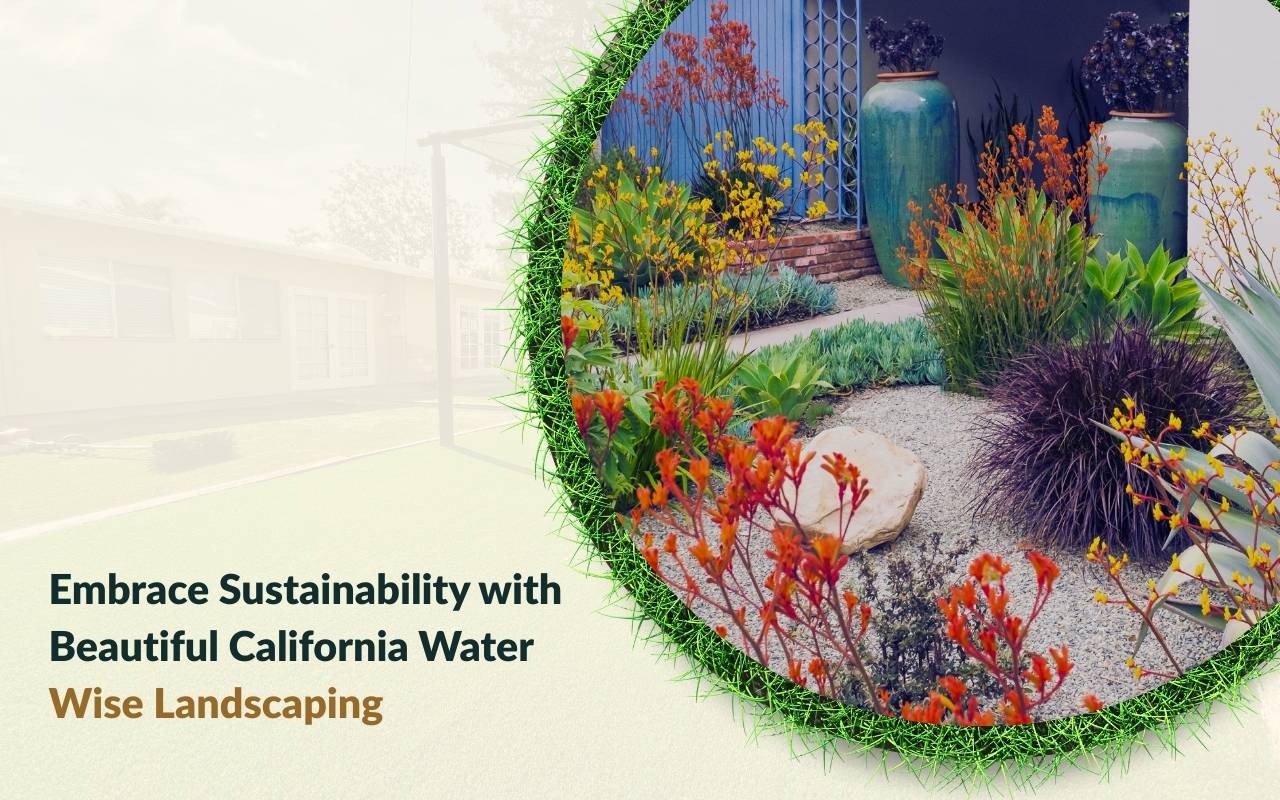
In the golden state of California, sun-kissed days and scarce rainfall challenge homeowners. California water wise landscaping offers a solution that combines beauty with responsibility. By embracing native plants and efficient irrigation, you conserve water and maintain elegance. Furthermore, climate-conscious landscaping reduces maintenance and supports local ecosystems. If you want to explore more, check our services.
Benefits of California Water Wise Landscaping
Water conservation and cost savings are immediate benefits. Homeowners can use up to 60% less water compared to traditional lawns. Additionally, groundwater replenishment improves naturally through efficient irrigation systems. Biodiversity thrives, attracting pollinators, birds, and beneficial insects. Moreover, carefully designed landscapes maintain year-round aesthetic appeal. In fact, well-executed designs may increase property value and showcase environmental stewardship.
Choosing Native Plants for Your Landscape
Native plants are crucial for a resilient garden. Species like California poppy, ceanothus, and coffeeberry require minimal irrigation once established. By understanding your property’s microclimates, you can group plants with similar water needs. This reduces waste and promotes healthy growth. Native plants also support wildlife, enhancing your garden’s ecological value. For tailored advice, visit our contact page.
Designing a Drought-Tolerant Garden
Smart planning and site analysis create resilient landscapes. Evaluate slopes, soil types, and drainage. Terracing, swales, and rain gardens capture water efficiently. Layer trees, shrubs, and groundcovers to reduce evaporation. Hydrozone plants to simplify maintenance and lower irrigation needs. By implementing these techniques, your garden remains vibrant with minimal resource input.
Implementing Efficient Irrigation Systems
Drip irrigation delivers water directly to plant roots, minimizing waste. Pair systems with smart controllers and soil sensors. This ensures plants receive adequate moisture while reducing manual watering. Rain sensors delay cycles after rainfall. Choosing water-efficient emitters and pressure adjustments further reduces waste. Overall, irrigation automation lowers landscape maintenance costs and supports california water wise landscaping principles.
Incorporating Permeable Hardscapes for Water Conservation
Permeable surfaces like gravel, decomposed granite, and pervious pavers allow water infiltration. They filter rainwater, replenish groundwater, and reduce stormwater runoff. Strategic placement directs water toward planting beds and rain gardens. This approach strengthens sustainability while enhancing design. Adding natural stone edges creates visual separation and clean lines.
Xeriscaping Techniques for a Water Wise Landscape
Xeriscaping focuses on water efficiency through plant selection and site planning. Amend soil with organic matter, use mulch, and group plants by water needs. Incorporate succulents, Mediterranean herbs, and drought-tolerant perennials. Minimal turf areas reduce watering while maintaining vibrancy. Gravel or decomposed granite accents provide contrast. Implementing these ideas exemplifies california water wise landscaping strategies.
Sustainable Maintenance Practices for Water Wise Landscaping
Prune plants to encourage airflow and healthy growth. Use organic fertilizers or compost teas to improve soil moisture retention. Control weeds manually or with mulch to reduce competition. Maintain irrigation systems regularly to ensure efficiency. Integrated pest management and native-friendly products preserve the ecosystem. Consistent practices lower long-term maintenance costs while promoting sustainability.
Creating Wildlife-Friendly Habitats in Your Yard
Water features like birdbaths or small ponds support local fauna. Plant diverse bloom times to attract pollinators year-round. Native shrubs offer shelter for birds and beneficial insects. Avoid broad-spectrum pesticides, opting for natural pest control. By combining food, water, and shelter zones, your garden supports biodiversity and reinforces california water wise landscaping.
Frequently Asked Questions
What is the primary goal of California Water Wise Landscaping?
It is to create outdoor spaces that thrive with minimal water using drought-tolerant plants, efficient irrigation, and smart design strategies.
How do I choose the right native plants for my region?
Research local nurseries or native plant societies. Group plants with similar needs to simplify care and optimize water use.
Can xeriscaping work in small residential yards?
Yes. Principles like soil improvement, mulching, and efficient plant selection scale to any yard size, including patios and balconies.
What maintenance is required for permeable hardscape?
Occasional sweeping or hosing keeps surfaces clean. Inspect joints and edges seasonally to maintain proper water infiltration.
How can I lower landscape maintenance costs over time?
Choose low-water, low-input plants, automate irrigation, and use organic mulch or compost. This reduces time and chemical treatments.
Embracing Beauty and Sustainability in California Landscaping
Creative plant combinations, eco-friendly hardscapes, and efficient irrigation create cohesive outdoor spaces. Textured succulents and native perennials serve as focal points. Gravel or decomposed granite paths enhance visual appeal. Sustainability-focused design connects homeowners with local ecology. By prioritizing both aesthetics and efficiency, california water wise landscaping delivers beauty, resilience, and conservation in every corner of your yard. Learn more through our services or contact us for guidance.
